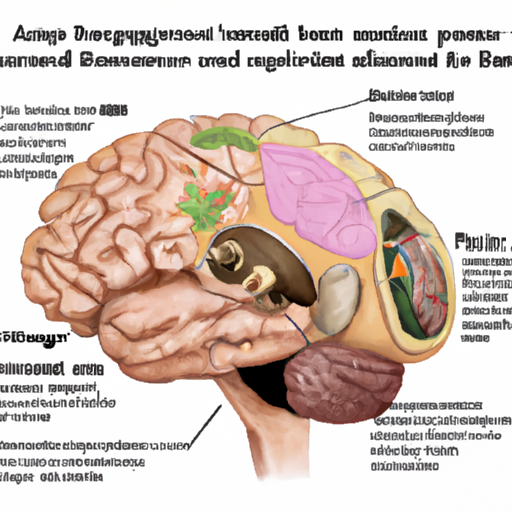Have you ever found yourself gazing into your beloved canine companion’s eyes and wondering what’s going on inside their furry little head? As a caregiver to your pet, you’ve no doubt experienced moments of profound connection, where it seems as if your dog understands every word you say, and then there are those times when it feels like you’re living with a creature from another planet.
Table of Contents
- A Look Inside the Dog’s Brain
- How Dogs Perceive the World
- The Emotional Life of Dogs
- Dog Intelligence: How Smart are Dogs?
- Frequently Asked Questions
Key Takeaways
- Dogs have a unique way of perceiving the world that is fundamentally different from humans.
- Dogs are capable of experiencing a wide range of emotions.
- Dogs have their own form of intelligence that is not inferior but different from human intelligence.
- Understanding how a dog’s brain works can help us to better care for our furry companions.
A Look Inside the Dog’s Brain
Underneath that cute furry exterior lies a complex and fascinating organ: the dog’s brain. Like the human brain, a dog’s brain is divided into two hemispheres and has many of the same basic structures, but there are also some important differences that shape how dogs perceive and interact with the world.
One key area where the dog brain differs from the human brain is in the olfactory cortex, the part of the brain that processes smells. In dogs, this area is about 40 times larger than in humans, which explains why your dog is so much better at sniffing out that hidden treat than you are. This is also why dogs are often used in search-and-rescue missions or as drug-sniffing dogs—they can pick up on smells that would be completely undetectable to humans.
Table 1: Comparison of Human and Dog Brain
| Structure | Human | Dog |
|---|---|---|
| Olfactory Cortex | Small | Large |
| Visual Cortex | Large | Small |
For more on this, check out this detailed comparison between the human and dog brain.
How Dogs Perceive the World
When we think about how dogs perceive the world, we often focus on their extraordinary sense of smell, but there’s more to it than that. Dogs also have excellent hearing, capable of detecting sounds at frequencies much higher than humans can hear. Their vision, while not as sharp as ours, is better adapted to detect movement and see in dim light.
In terms of communication, dogs rely heavily on body language, and they are constantly reading the signals that other dogs, humans, and even other animals are sending through their movements and postures. This is one reason why socialization is so important for dogs—it helps them learn to interpret these signals correctly.
For more insights, check out the article on dog sensory perception and dog communication on OneTopDog.
The Emotional Life of Dogs
Dogs are capable of experiencing a wide range of emotions, from joy and excitement to fear, anxiety, and even depression. They have a particular knack for picking up on the emotions of their human caregivers, often mirroring our feelings.
While the emotional life of dogs is a complex and still somewhat mysterious realm, there is growing scientific evidence to support the idea that dogs do indeed have feelings, and that these emotions play a central role in their behavior.
However, it’s important to remember that dogs do not experience emotions in exactly the same way that humans do. Their emotional responses are more immediate and less mediated by conscious thought. This is why it’s so important to provide a stable, secure, and positive environment for our dogs, as they are highly sensitive to changes in their surroundings and can become distressed if they feel unsafe or unsure.
For more on the emotional life of dogs, check out this informative article.
Dog Intelligence: How Smart are Dogs?
Defining intelligence in dogs can be tricky, as it’s not the same as human intelligence. Dogs have their own unique form of intelligence that is shaped by their evolutionary history as pack animals. While they may not be able to solve complex math problems or write a symphony, they excel in areas like social cognition, problem-solving, and adaptability.
Dogs are also capable of learning and remembering a wide range of commands and signals, and they are remarkably adept at reading human emotions and responding in ways that often seem uncannily perceptive.
For more on dog intelligence, check out this in-depth article.
Frequently Asked Questions
-
Can dogs feel emotions like humans do?
Yes, dogs are capable of experiencing a wide range of emotions, although they may not experience them in exactly the same way that humans do. -
Are dogs colorblind?
Dogs can see color, but their color vision is not as rich as ours. They see the world in shades of blue and yellow, but cannot distinguish red and green. -
Can dogs understand human language?
While dogs do not understand human language in the same way that we do, they can learn to associate certain words and phrases with specific actions or objects.
Understanding how a dog’s brain works can help us to better care for and communicate with our furry friends. It reminds us that while dogs may not think and perceive the world in exactly the same way that we do, they are intelligent, emotional beings who deserve our love, respect, and understanding.



